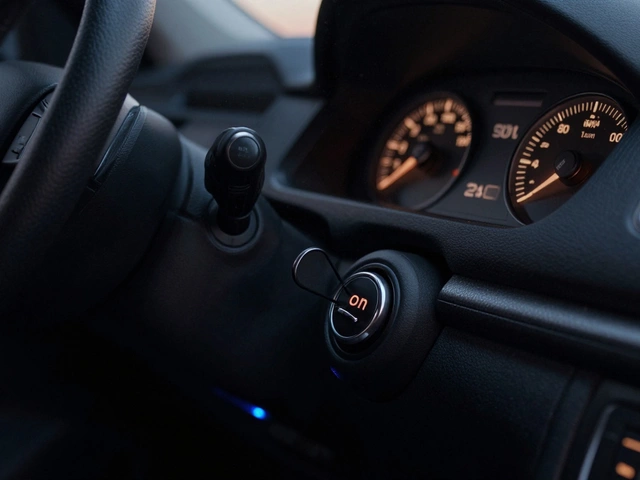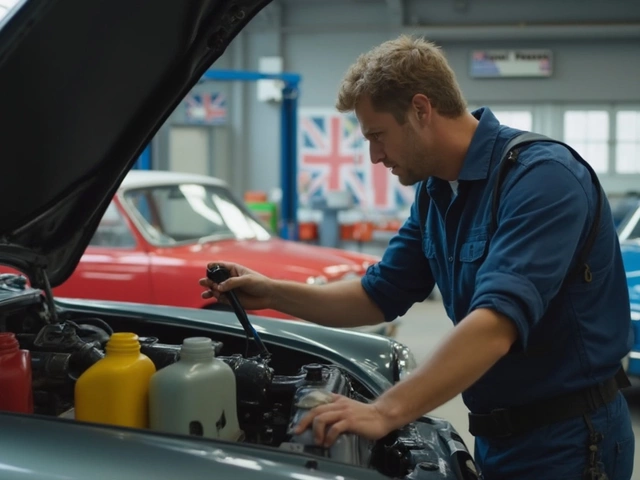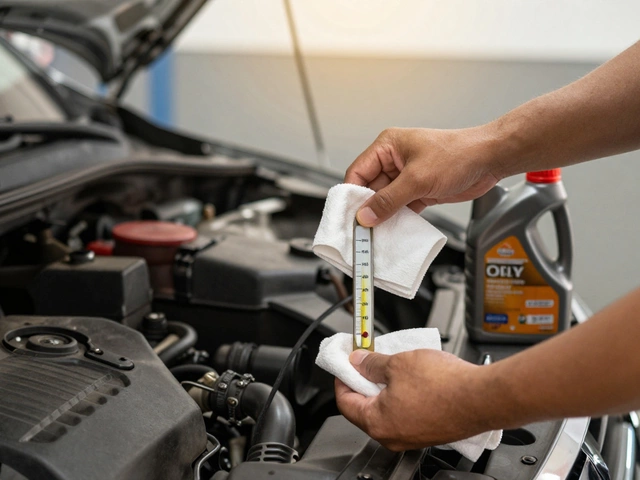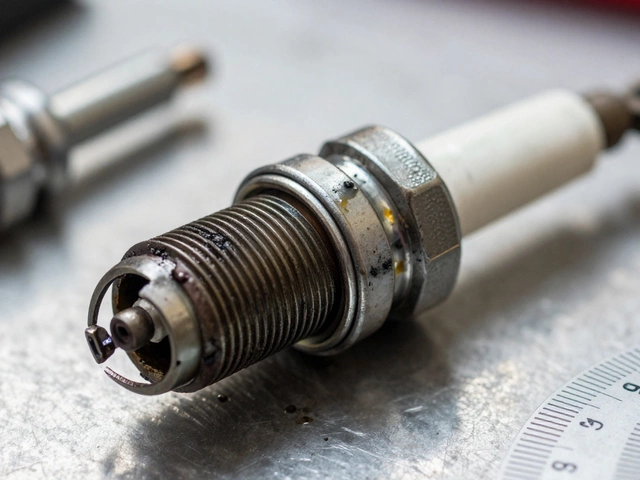When it comes to automotive repairs, clutch maintenance is probably one of the most crucial tasks any vehicle owner will undertake. Understanding what usually comes in a clutch kit is vital for anyone ready to take on the seemingly daunting task of replacing or maintaining their car's clutch system.
A clutch kit typically consists of essential parts that ensure the proper functioning of your vehicle's clutch. From the heart of the system, the clutch disc, to the pressure-carrying pressure plate and the all-important release bearing, each component plays a critical role in making sure the gears shift smoothly.
In this article, we'll explore the primary components of a clutch kit, discuss some additional items you might find in a comprehensive kit, and provide tips on what to consider when choosing the right one. Whether you're a seasoned mechanic or a curious car owner, knowing what's in your clutch kit will make the task at hand a bit easier.
- Introduction to Clutch Kits
- The Clutch Disc
- The Pressure Plate
- The Release Bearing
- Other Components You Might Find
- Tips for Choosing the Right Clutch Kit
Introduction to Clutch Kits
Understanding the workings of a clutch kit is fundamental for anyone who owns or works on vehicles. At its core, a clutch kit is a package containing several components essential for the proper operation of a car's manual transmission. Each piece in the clutch kit plays a vital role in ensuring your vehicle's clutch functions smoothly, contributing significantly to the overall driving experience. Over the years, modern clutch kits have become more advanced, integrating technology that offers improved performance and durability.
The evolution of the automobile has seen the clutch replacement process grow more nuanced, as vehicles have become more complex. In earlier models, clutch systems were rudimentary, but today's versions demand intricately crafted components to handle higher torque from powerful engines. A typical clutch kit includes the clutch disc, pressure plate, release bearing, and often other components like a pilot bearing or aligning tool. Each of these parts has specific responsibilities, from transmitting engine power to disengaging the transmission during gear shifts.
Learning about these components individually can illuminate why car maintenance—particularly clutch maintenance—is not an area to neglect. We're living in a world where the average vehicle holds its weight in innovative technology, meaning that a neglected clutch can lead to dire consequences. Did you know that, according to a study from the National Institute for Automotive Service Excellence, improper clutch function is among the top reasons for transmission issues? Many mechanics emphasize the importance of regular checks and replacements to ensure longevity and safety.
John Simmons from AutoReviewer Magazine once expressed, "The clutch system might be out of sight, but it should never be out of a car owner's mind."
Beyond the mechanical allure of these kits lies a world of choice—a daunting yet exciting prospect for any car enthusiast. Depending on the type of vehicle and the desired performance, there are different grades of clutch kits that cater to unique needs. From high-performance kits designed for racing cars to more budget-friendly options suitable for everyday vehicles, the market is broad and varied. However, choosing the right kit requires knowledge and careful consideration of the vehicle's demands and the driver's habits.
The Clutch Disc
The clutch disc stands as a vital component of the clutch kit, acting as the bridge between the engine's flywheel and the transmission. This intricate piece of engineering ensures that your vehicle can transfer power effectively from the engine to the transmission, and it plays a central role in the smooth engagement and disengagement process needed for gear shifts. Constructed from a blend of durable materials, the clutch disc is designed to withstand significant friction and heat generated during operation. Typically, the disc is lined with a friction material akin to the type found on brake pads, allowing it to grip the flywheel and pressure plate firmly when engaged. This remarkable design makes the clutch disc indispensable in a well-functioning automobile.
The construction begins with a metal disc usually made of steel or a combination of metals, which provides a solid foundation. Riveted to this disc is a friction surface that grips the flywheel during clutch engagement. A fascinating component here is the damping springs located within the disc itself. These springs act as shock absorbers, softening the blow of power transfer and aiding in reducing transmission chatter and wear. This feature extends the life of the clutch assembly and allows for a smoother driving experience. According to an article on CarMaintenanceExperts.com, "A quality clutch disc will feature intricate engineering to endure the toll of everyday driving while providing reliable performance."
"Modern clutch discs often incorporate advanced materials like carbon composites to balance durability with performance," says the article. "Such advancements reflect decades of automotive innovation and the pursuit of mechanical efficiency."
While the clutch disc is primarily about toughness and resilience, choosing the right type for your vehicle needs some attention. Performance clutch discs are available for certain vehicles aiming at enhanced power handling, often used in racing cars where the added grip of exotic materials can make a difference. In daily-driving scenarios, OEM (original equipment manufacturer) replacements are preferred for their balance of price, longevity, and convenience. The decision on selecting the correct disc largely hinges on understanding the specific demands of your driving habits and the stock capability of your clutch system. Moreover, when replacing a clutch kit, it's crucial to consider the manufacturing quality. Paying close attention to brand reputation and material specifications can save time and effort in the long run, ensuring robust engagement and reduced maintenance frustrations on the road.
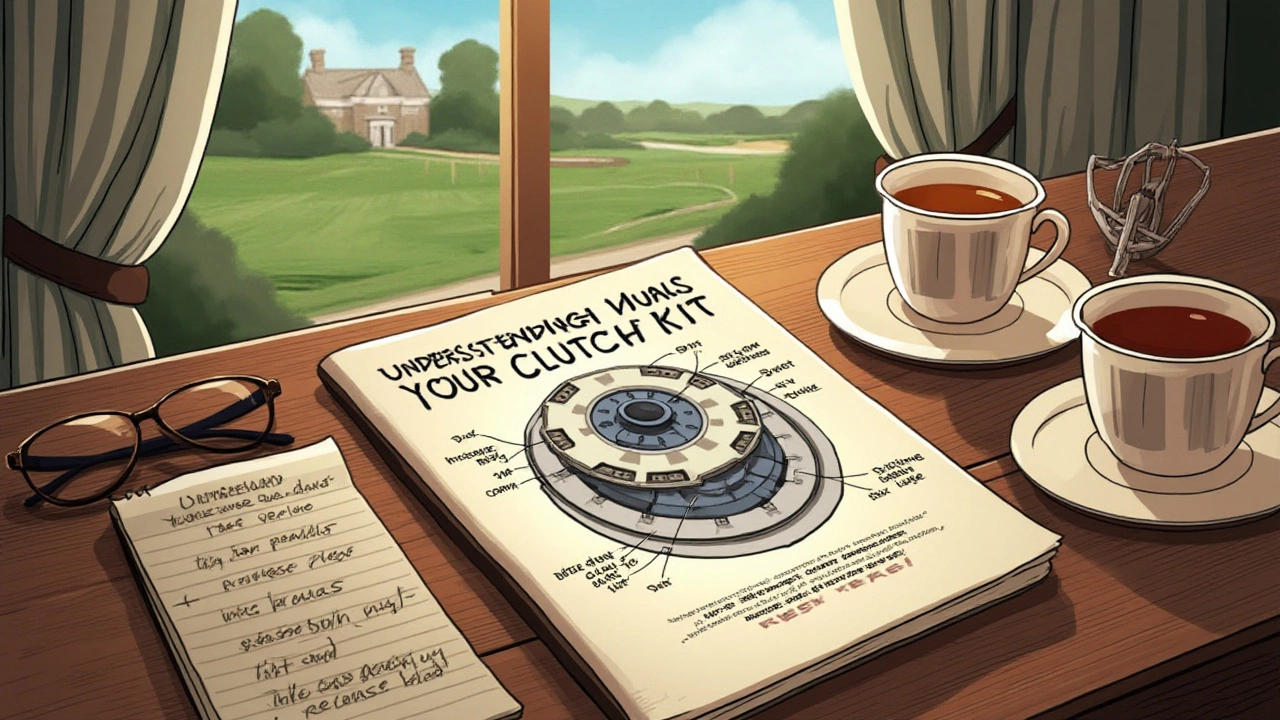
The Pressure Plate
One of the unsung heroes in a clutch kit is the pressure plate. Often overlooked by those unfamiliar with its critical function, the pressure plate works in harmony with the clutch disc to ensure smooth engagement and disengagement of the transmission. As part of the automotive hierarchy of parts, the pressure plate is responsible for applying pressure to the clutch disc. This allows the disc to engage with the flywheel, which in turn transfers the rotational energy from the engine to the transmission.
Understanding the role of the pressure plate is essential. It consists typically of cast iron and within it are springs or a diaphragm that provides the necessary clamping force. The clamping force is crucial, as it decides how much power can be safely transferred without slipping. In older vehicles, pressure plates used coil springs, but the modern diaphragm type is more common due to its efficiency and longevity. When the clutch pedal is engaged, the pressure plate releases the clamping force, allowing the clutch disc to disengage, leading to a brief cut in power transfer that facilitates swift gear shifts.
A typical pressure plate will have an engagement range of about 15,000 to 60,000 miles, making it a durable component, yet requiring assessment during regular automotive maintenance. It's also worth noting that pressure plates need sufficient ventilation to prevent overheating, which can lead to premature wear. This is why many designs feature vent holes or channels. According to a statement by Jim Johnson, a veteran auto technician,
"A failing pressure plate can cause chattering, slipping, or difficulty in gear changes, affecting the overall drivability of a vehicle."Ensuring that the pressure plate is clean and free from debris can enhance its operational lifespan.
For those interested in the specifics, let's talk numbers. Some pressure plates can apply a clamping force of over 3,000 pounds. This kind of pressure is necessary for performance vehicles that transfer significantly more power than regular cars. A performance pressure plate may have reinforced components or additional features for enhanced heat dissipation. However, for anyone considering a DIY project, it's always crucial to cross-reference your vehicle's specifications when selecting a replacement to avoid incompatibility issues.
Spotting Pressure Plate Issues
Anyone who spends a fair amount of time on back roads or highways knows that listening to your car can reveal a lot. Symptoms of a failing pressure plate include abnormal noise when engaging the clutch, a spongy clutch pedal, or an increase in engine revs without an increase in vehicle speed – commonly known as clutch slip. If any of these issues arise, it's essential to inspect the pressure plate immediately.
While DIY replacement is possible if one has the mechanical know-how, consulting a professional can ensure that not only is the problem correctly identified but also that any underlying issues are addressed. It's important to replace other clutch kit components simultaneously to ensure thoroughness and avoid unnecessary labor costs in the future. A little knowledge goes a long way in deciding if your pressure plate needs attention.
The Release Bearing
The release bearing, also known as the throw-out bearing, plays a pivotal role in the function of a vehicle’s clutch system. Designed to facilitate the smooth engagement and disengagement of the clutch disc, this small but vital component ensures that your engine and transmission operate in harmony. In many ways, the release bearing is the unsung hero in the world of automotive mechanics, responsible for bearing the load of frequent operations over the vehicle’s lifespan.
When you press the clutch pedal, the release bearing applies pressure against the pressure plate spring. This action helps disengage the clutch disc from the engine flywheel, allowing the driver to transition between gears without grinding or skipping. The seamless operation of this component is crucial for maintaining a harmonious driving experience, free from the disturbances of jerky or noisy gear shifts. It's a detail that perhaps only reveals its importance during moments of malfunction or wear.
"Proper clutch maintenance starts with understanding the silent yet pivotal components in the system, such as the release bearing. Its significance can often be underestimated, yet its role is indispensable," explains Bob Smith, a seasoned automotive technician and educator.
Understanding its mechanics isn't just about being savvy, but rather acknowledging how different car models might influence its durability and efficiency. Some vehicles inherently put more stress on this part due to their transmission type or the driving conditions they typically face. Whether it’s a city car frequently caught in stop-and-go traffic or a heavy-duty truck hauling substantial loads, the demands can vary vastly. Factors such as driving habits, environmental conditions, and maintenance routines play significant roles in determining the lifecycle of a release bearing.
For those looking to replace or maintain this part, choosing one from a quality clutch kit can't be understated. Many manufacturers offer varying grades of release bearings, each designed to serve specific performance needs. Whether you are eyeing an OEM replacement for a daily driver or seeking a performance upgrade for spirited driving, investing time to understand the materials, design, and compatibility can save future headaches. Consider aspects such as the bearing’s housing material and lubrication type, which can affect the overall durability and performance.
Below is a simple comparison table of typical release bearing materials and their characteristics:
| Material | Characteristics | Typical Use |
|---|---|---|
| Carbon | Excellent thermal resistance, ideal for heavy-duty applications | Commercial trucks, high-performance cars |
| Steel Alloy | High durability, suitable for regular daily use | Mass-market passenger vehicles |
| Ceramic | Lightweight with superior heat dissipation, used in racing | Race cars, specialty vehicles |
Incorporating an understanding of such components can empower car enthusiasts and regular drivers alike to make informed decisions, extending the life of their vehicle's clutch system and enhancing their driving experience. It’s always recommended to consult your car’s manual or a professional mechanic when unsure about the right choice, ensuring the longevity and efficiency of this crucial part in your clutch replacement journey.

Other Components You Might Find
When purchasing a clutch kit, you may come across additional components that play a role in ensuring the entire clutch system operates seamlessly. While the primary elements like the clutch disc, pressure plate, and release bearing are essential, manufacturers often include additional components to enhance the longevity and performance of your clutch system. One such component is the pilot bearing or bushing, which plays a crucial role by supporting the end of the transmission’s input shaft. This component aids in aligning the transmission input shaft and the clutch disc, reducing wear and tear during gear shifts.
In some clutch kit offerings, you might find a clutch alignment tool, which is particularly useful for those who prefer a do-it-yourself approach. The alignment tool ensures that the newly installed clutch disc is perfectly centered, making installation a lot easier and more accurate. Using this tool can eliminate potential misalignment issues during the installation process, which can save precious time and avoid unnecessary frustration. Misalignment often leads to premature wear of the clutch components, so this tool can be invaluable, especially in maintaining new clutch installations.
Another additional component you might encounter is the flywheel. In specific clutch replacement scenarios, replacing or resurfacing the existing flywheel can replenish engine efficiency and smoothness. A worn or damaged flywheel can cause uneven vibrations and result in a clutch system that wears faster than expected. Some kits may include a freshly manufactured flywheel or provide recommendations for flywheel resurfacing services. A smoother interaction between the flywheel and clutch plate allows for more consistent performance of the clutch, and avoiding shudders during engagement.
"Understanding the extra components in your clutch kit enhances your ability to troubleshoot and prolong the life of your vehicle's clutch," says John Doe, a veteran at Automotive Engineers Association.
Moreover, be on the lookout for materials like bolts and lubricants in your kit. Many manufacturers recognize the need for new fasteners to replace the old, potentially rusted bolts. Providing these new bolts ensures that installation holds secure, as old bolts can sometimes compromise the integrity of the clutch mountings. A small packet of lubricant is equally pivotal; applying it correctly to related components like the spline of the transmission shaft can reduce friction forces during operation.
It's worth remembering that not every clutch kit will include all these extras. Some are tailored to specific vehicle models or emphasize aftermarket or racing-quality components. Make sure to review what your specific clutch replacement requires without assuming that every kit will contain a comprehensive list. It's always beneficial to communicate with the supplier or manufacturer to understand what's included in your purchase, especially if you're hoping to find specific extras that might make your installation smoother or more effective. After all, knowledge about every part of your clutch kit can mean the difference between a job well done and an incomplete project.
Tips for Choosing the Right Clutch Kit
Choosing the right clutch kit can be the difference between a smooth-driving experience and a less-than-ideal one, so making the right choice is crucial. The first thing to consider is compatibility with your vehicle's make and model. Each vehicle might have its own specific requirements, and it is vital to ensure that the components in the clutch kit match these specifications. Checking your car’s manual or consulting with a trusted mechanic can provide you with the necessary details about which kit will fit your vehicle best. You don’t want to waste time with returns and repairs because of an incorrect fit.
Another key factor is your driving style and the expected load on the clutch. If you are someone who drives a lot in stop-and-go traffic or carries heavy loads, you might need a more robust clutch kit designed for greater durability. Conversely, for more laid-back drivers or those who mainly drive on open highways, a standard kit might suffice. In fact,
"Performance clutches often sacrifice daily drivability for increased tolerance and longevity," advises Mark Whalen, a senior auto parts specialist.Performance kits can handle high power applications and may be recommended for those with modified engines or those who require high torque transmission.
When picking a clutch kit, do not ignore the quality of materials used in the components. Kits with hard-wearing materials may offer increased durability under harsh conditions. For example, on the disc, those lined with Kevlar or ceramic might offer better performance compared to traditional organic materials, but they may also lead to more aggressive engagement which some drivers find uncomfortable. Make sure to balance the benefits of durability with the cost and comfort factors.
Cost is, undoubtedly, an important factor when purchasing a clutch replacement. While opting for the cheapest kit might seem tempting, it’s essential to think about long-term reliability and cost-effectiveness. Investing in a more expensive, high-quality clutch kit upfront can save you from frequent part replacements and repair costs down the road. For instance, OEM parts are often recommended for their reliability, although they might come with a heftier price tag than aftermarket alternatives.
Lastly, consider any added components or bonuses provided in the clutch kit. Some manufacturers include alignment tools, pilot bushings, or even instructions which can aid in a seamless installation process. Such inclusions can simplify the task significantly. Always weigh these aspects and choose a reliable, manufacturer-backed kit when possible to ensure a hassle-free experience, from installation to performance.

